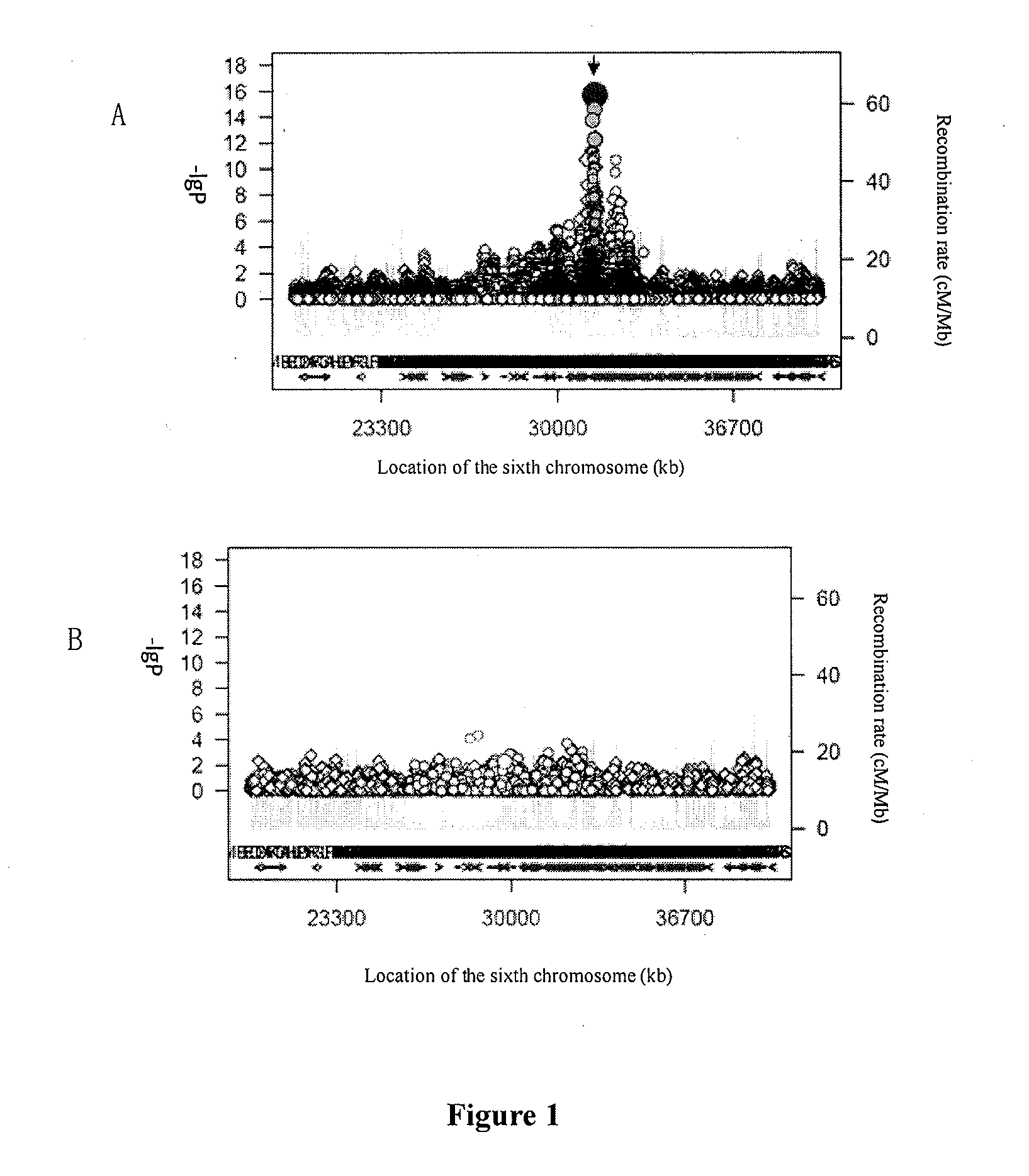Use of hla-b*1301 allele
a technology of hla-b*1301 and allele, which is applied in the direction of anti-noxious agents, drug compositions, biocide, etc., can solve the problem of no reliable detection method available for predicting the risk of dhs
- Summary
- Abstract
- Description
- Claims
- Application Information
AI Technical Summary
Benefits of technology
Problems solved by technology
Method used
Image
Examples
example 1
[0022]The HLA-B*1301 allele is a genetic marker of the risk of dapsone hypersensitivity syndrome.
I. Samples
[0023]The samples were peripheral blood taken from human, including case samples, clinical control samples and healthy control samples.
1. Case Samples
[0024]76 Chinese DHS patients (39 for the discovery-phase study, and 37 for the validation-phase study) were included in the study. These 76 patients were administered DDS when receiving combined chemotherapy against leprosy. The male-to-female ratio in the patients, aged 38 years old in average, was 1.6:1. From the initial administration of DDS to the occurrence of DHS clinical symptoms, it took 2-8 weeks (32.79 days in average). The most common skin lesion was maculopapule (57.7%), secondly exfoliative dermatitis (38.5%), scarlatiniform erythema (7.7%), and oral erosion (1.3%). The system involvement symptoms included: fever (83.1%), abnormal liver function (74.4%), and swollen lymph glands (34.6%). The laboratory examination re...
PUM
| Property | Measurement | Unit |
|---|---|---|
| Hypersensitivity | aaaaa | aaaaa |
Abstract
Description
Claims
Application Information
 Login to View More
Login to View More - R&D
- Intellectual Property
- Life Sciences
- Materials
- Tech Scout
- Unparalleled Data Quality
- Higher Quality Content
- 60% Fewer Hallucinations
Browse by: Latest US Patents, China's latest patents, Technical Efficacy Thesaurus, Application Domain, Technology Topic, Popular Technical Reports.
© 2025 PatSnap. All rights reserved.Legal|Privacy policy|Modern Slavery Act Transparency Statement|Sitemap|About US| Contact US: help@patsnap.com


